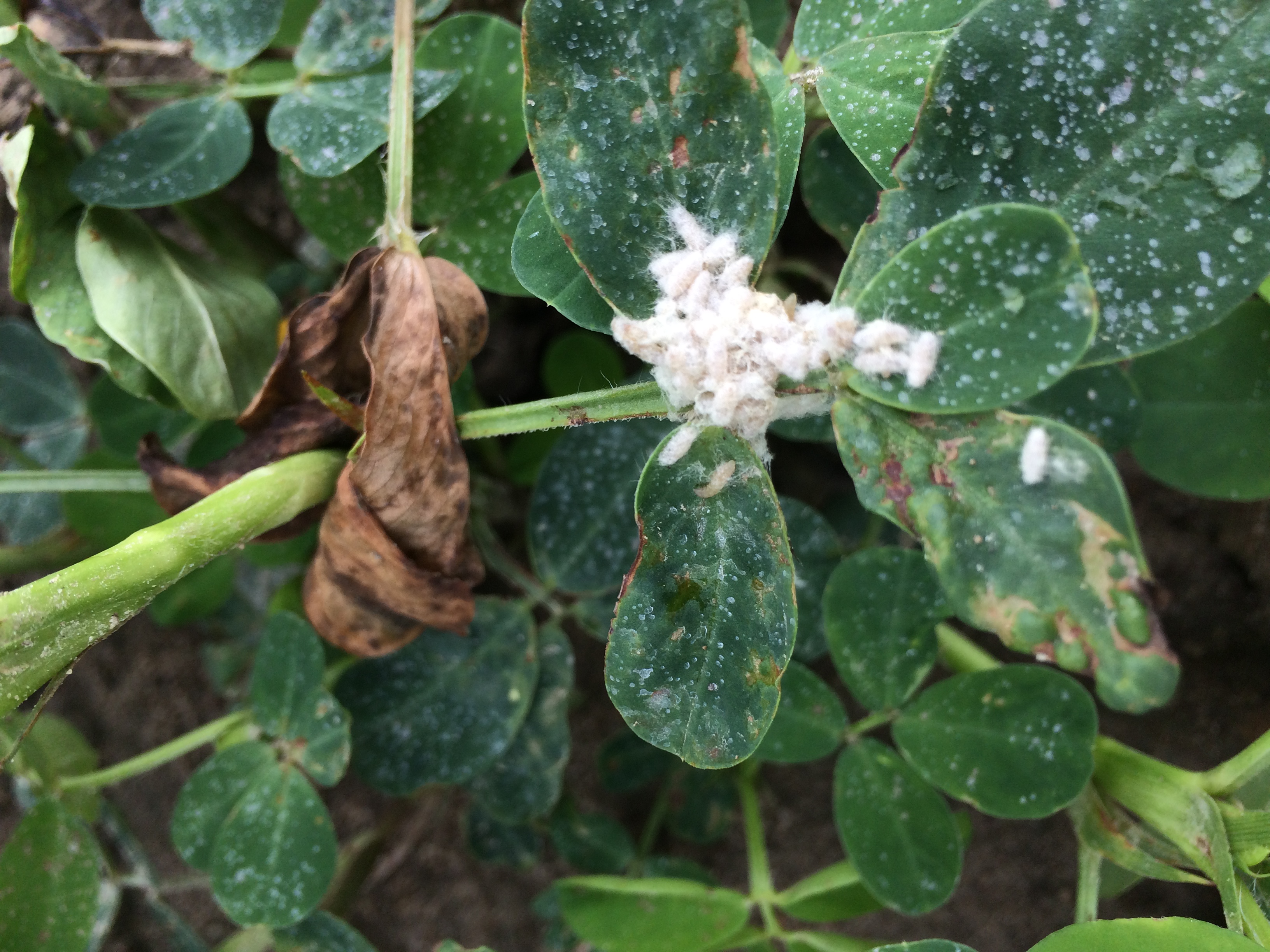Insect management tends to focus on pests that cause damage and reduce yields, but one aspect of integrated pest management (IPM) includes the knowledge of beneficial insects that naturally control those pests. In peanuts, there are several different beneficial parasitoids that can be found preying on pest insects in the southern U.S. A parasitoid is an organism that lives on or in a host organism and ultimately kills the host. Evidence of some of these beneficial parasitoids that might be seen in the field are cocoons of parasitic wasps. Often a white mass of cocoons can be seen on the leaves of plants (Image 1).
The tiny wasp lays its eggs in a caterpillar, the eggs hatch and then feed on its living host (caterpillar). The larvae later emerge from the caterpillar and spin the silken cocoons (Image 1), before completing their development and forming into adults. These Parasitic Wasps have been seen attacking cutworms in peanut fields. The presence of cocoons on leaves is first noticed in mid to late June.
For more information please contact your county agent, or follow these links to publications on this topic:
- Foliage Feeders in Peanuts
- Granulate cutworm, Feltia subterranea (Fabricius) (Insecta: Lepidoptera: Noctuidae)
- Bull Selection Strategies Webinar – May 9 - April 19, 2024
- Freemartin: A Heifer Calf Born as a Twin to a Bull Calf - February 23, 2024
- Highlights from the 2023 Panhandle Cattlemen’s College - November 3, 2023

